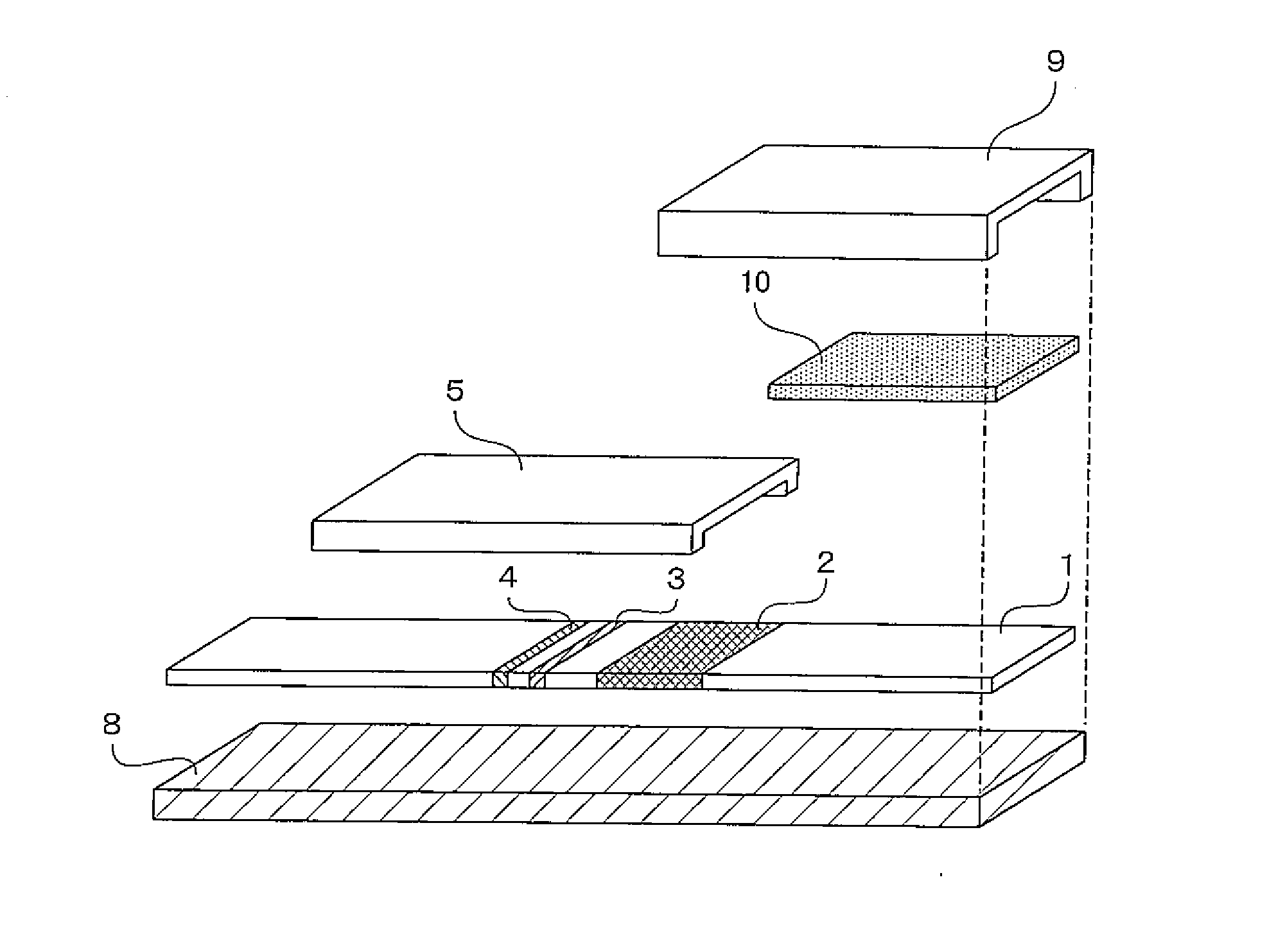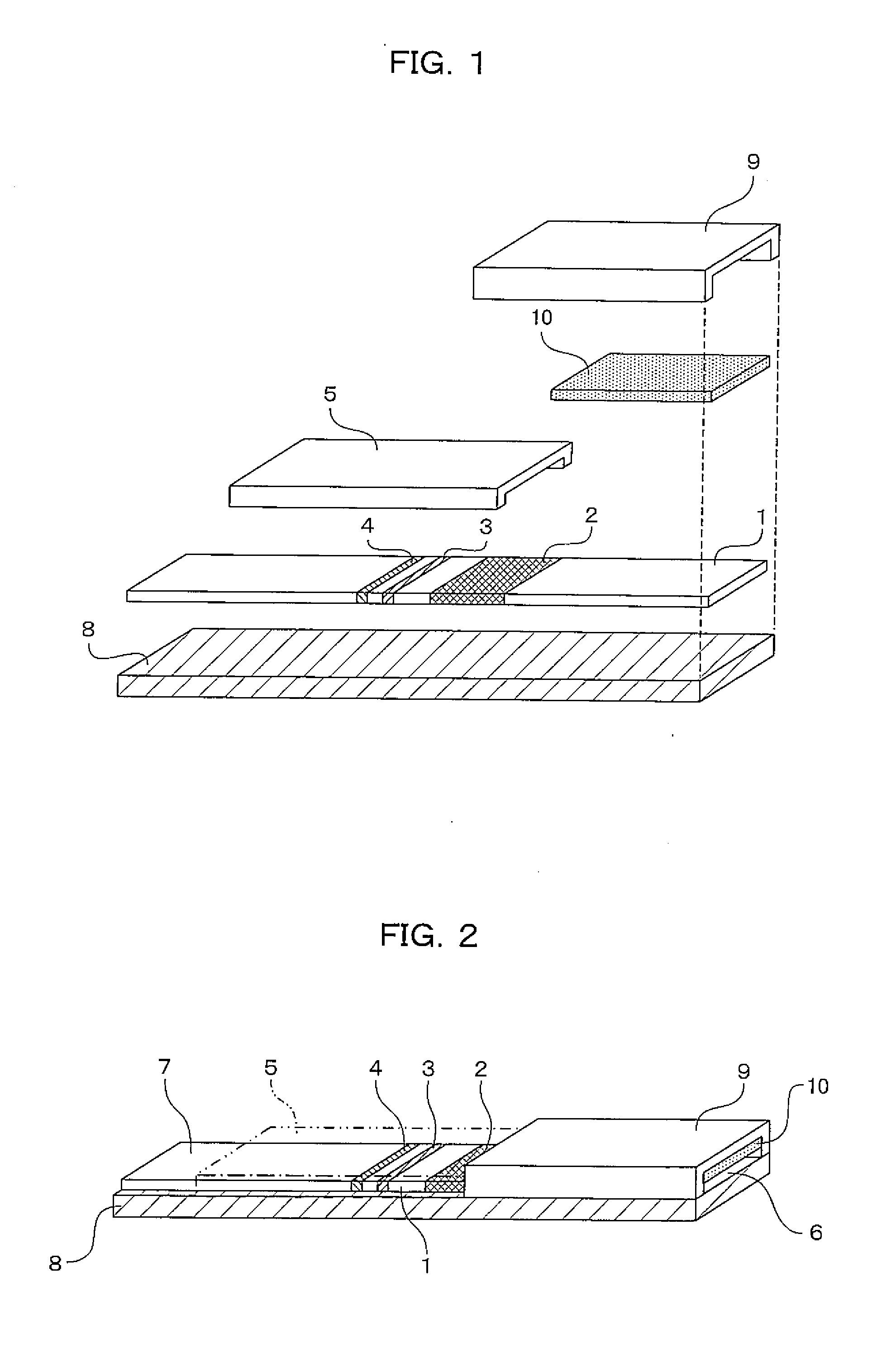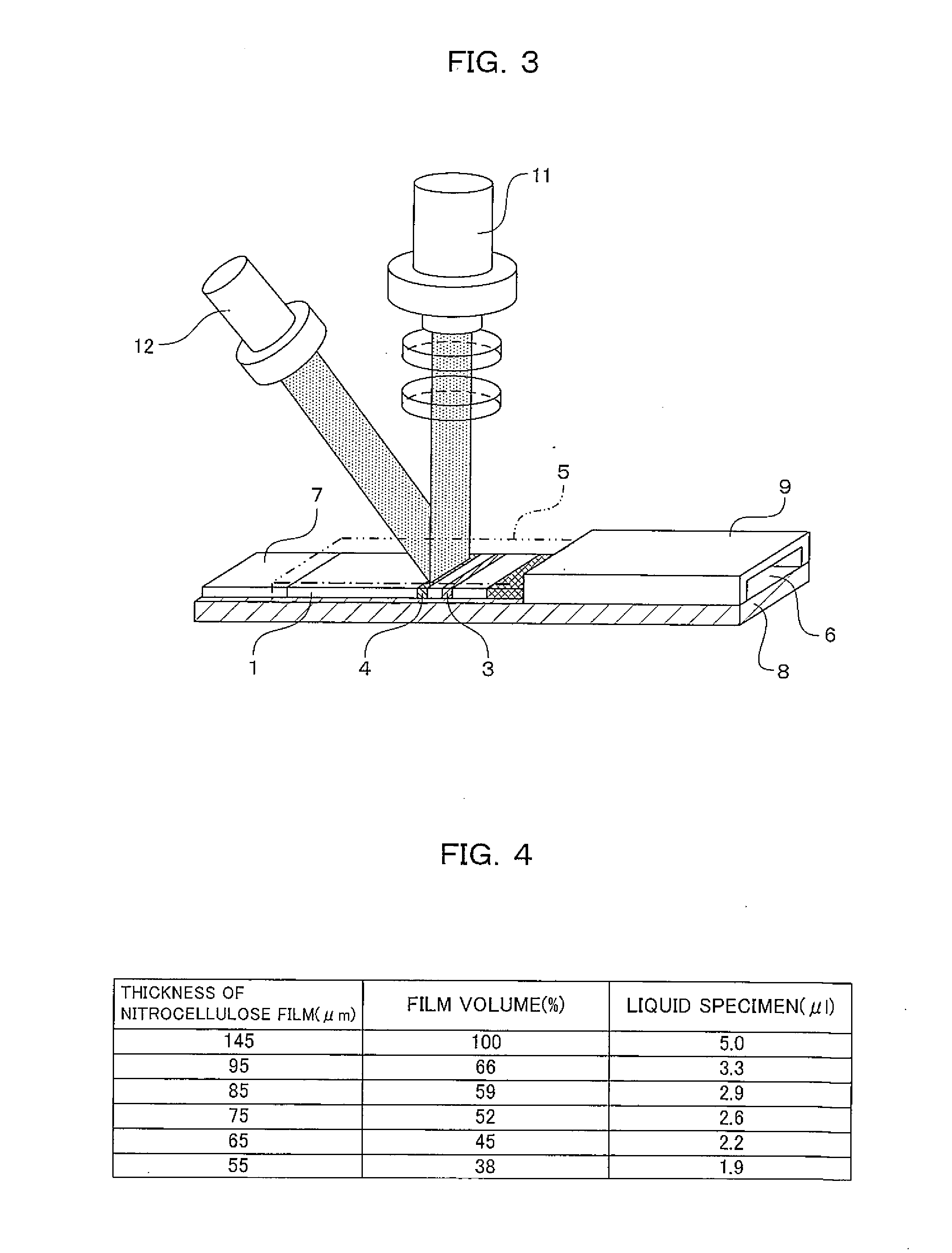Method of manufacturing biosensor and biosensor produced thereby
a biosensor and biosensor technology, applied in the field of biosensors, can solve the problems of insufficient simplicity and rapidity of complicated operations, inability to measure without, and excessive sample amount, so as to reduce the required amount of liquid specimens, analyze the effect of test substances easily and quickly
- Summary
- Abstract
- Description
- Claims
- Application Information
AI Technical Summary
Benefits of technology
Problems solved by technology
Method used
Image
Examples
example 1
The Quantification of Whole Blood CRP when a Development Layer is Reduced in Thickness
[0065]An immuno-chromatographic sensor was produced that was a biosensor including a first reagent immobilizing portion 3 in which anti-CRP antibody A was immobilized, a second reagent immobilizing portion 4 in which anti-CRP antibody B was immobilized, and a labeled reagent portion 2 containing a complex (labeled reagent) of anti-CRP antibody C and a gold colloid, on a development layer 1 including a nitrocellulose film. The immuno-chromatographic sensor is shown in FIGS. 1 and 2. In FIGS. 1 and 2, the immuno-chromatographic sensor includes the first reagent immobilizing portion 3 and the second reagent immobilizing portion 4 in which the antibodies are immobilized, the labeled reagent portion 2 that is provided between the reagent immobilizing portions and the adding portion of a liquid specimen and contains a complex of anti-CRP antibody C and a gold colloid, and a specimen adding portion 6.
[006...
example 2
The Quantification of Whole Blood CRP when a Development Layer is Reduced in Thickness
[0078]An immuno-chromatographic sensor was produced that was a biosensor including a first reagent immobilizing portion 3 in which anti-CRP antibody A was immobilized, a second reagent immobilizing portion 4 in which anti-CRP antibody B was immobilized, and a labeled reagent portion 2 containing a complex (labeled reagent) of anti-CRP antibody C and a gold colloid, on a development layer 1 including a nitrocellulose film. The immuno-chromatographic sensor is shown in FIGS. 1 and 2. In FIGS. 1 and 2, the immuno-chromatographic sensor includes the first reagent immobilizing portion 3 and the second reagent immobilizing portion 4 in which the antibodies are immobilized, the labeled reagent portion 2 that is provided between the reagent immobilizing portions and the adding portion of a liquid specimen and contains a complex of anti-CRP antibody C and a gold colloid, and a specimen adding portion 6.
[007...
example 3
The Quantification of Whole Blood CRP when the Thickness and the Pore Size of a Development Layer are Changed
[0084]An immuno-chromatographic sensor was produced that was a biosensor including a first reagent immobilizing portion 3 in which anti-CRP antibody A was immobilized, a second reagent immobilizing portion 4 in which anti-CRP antibody B was immobilized, and a labeled reagent portion 2 containing a complex (labeled reagent) of anti-CRP antibody C and a gold colloid, on a development layer 1 including a nitrocellulose film. The immuno-chromatographic sensor is shown in FIGS. 1 and 2. In FIGS. 1 and 2, the immuno-chromatographic sensor includes the first reagent immobilizing portion 3 and the second reagent immobilizing portion 4 in which the antibodies are immobilized, the labeled reagent portion 2 that is provided between the reagent immobilizing portions and the adding portion of a liquid specimen and contains a complex of anti-CRP antibody C and a gold colloid, and a specime...
PUM
| Property | Measurement | Unit |
|---|---|---|
| thickness | aaaaa | aaaaa |
| thickness | aaaaa | aaaaa |
| thickness | aaaaa | aaaaa |
Abstract
Description
Claims
Application Information
 Login to View More
Login to View More - R&D
- Intellectual Property
- Life Sciences
- Materials
- Tech Scout
- Unparalleled Data Quality
- Higher Quality Content
- 60% Fewer Hallucinations
Browse by: Latest US Patents, China's latest patents, Technical Efficacy Thesaurus, Application Domain, Technology Topic, Popular Technical Reports.
© 2025 PatSnap. All rights reserved.Legal|Privacy policy|Modern Slavery Act Transparency Statement|Sitemap|About US| Contact US: help@patsnap.com



